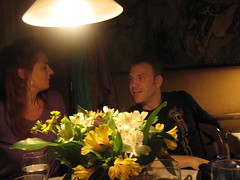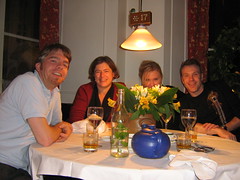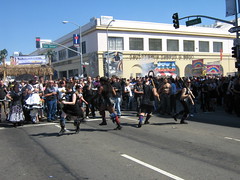Ok, I went to this talk for two reasons, first because I am interested in the ways communities construct knowledge and in how we can observe that, and because Camille is a student of my friend Bernhard Rieder and I know how hard it can be as a grad student at a big conference, so I wanted to be supportive.
The talk itself was hampered by how little time was alotted to speakers in every panel–only 15 minutes instead of the usual 20. That missing 5 minutes equals 1-2 pages of text and it’s quite a challenge to explain any but the most superficial ideas in only 15 minutes. Unfortunately Camille’s talk was fairly complex, and I think it didn’t all come across clearly. However, since she has posted her slides and paper, I was able to take a closer look and found that my initial impression was correct; she is onto something quite interesting.
I’ll quote a short passage from her paper that sums up what she is studying right now:
From this quick contextualization, we can specify two major directions the net.artists have followed in Internet cyberculture: the economy of things (the growing population of hobbyists among the sub-cultures on the Web), embodied by informational objects (content and form) that are collected and shared in most of web communities, and the economy of people (triumphant in the Web 2.0’s fashion), embodied in the usage of applications, information processing and communication networks.
In the talk she went on to discuss the example of nasty nets, a site that was active from 2006-2007 and at which a group of net.artists shared links and images of interest that they discovered while surfing, identifying an emerging vernacular that counters the serious or high culture (or hacker, which is an interesting connection) approaches to both the Internet and to net.art. Talking afterward, there was some thought that the 4chan “/b/” image board may be a good place (or even the best?) to spot the bleeding edge of memetic evolution online. –Not that we needed an excuse to visit it, but what the hell. 😉



